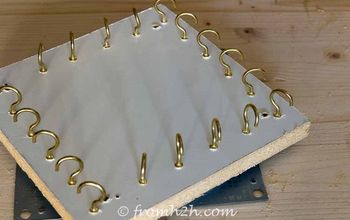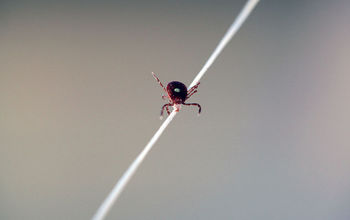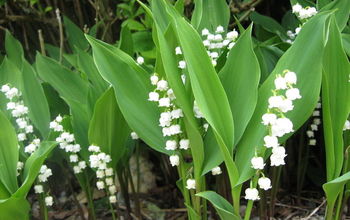341 Views
Red Lily Leaf Beetle Destroying My Lilies

by
Luis
(IC: homeowner)
ORIGIN: The red lily leaf beetle (Lilioceris lilii) is an insect native to Europe and Asia which rapidly spread through New England from Eastern Massachusetts and which has been also been found in Northern New York State. The original infestation in New England was detected in 1992 in Cambridge, Massachusetts, although the beetle has been active in the Montreal, Canada, area since 1945. There are recent reports that the beetle has been seen in Alberta, Canada, since about 2005.
DAMAGE: If uncontrolled, the beetle will completely defoliate and ultimately kill all true lilies (Lilium species, such as Asiatic, Oriental, Easter, Tiger and Turk's Cap lilies). It will also feed on Fritillaria species, and many other plants, although the primary targets are Lilium and Fritillaria species.
DESCRIPTION: The adult beetle is bright scarlet red, with black legs, head, antennae and undersurface. It is 1/4" to 3/8" long and is a strong flyer. The beetle reportedly will squeak if squeezed gently (however, few gardeners are willing to be gentle to this beetle). The adult lays reddish-orange eggs which hatch into particularly unpleasant larvae, which look like 3/8" long slugs; colored orange, brown, yellow or green with black heads. The larvae cover themselves with their own excrement (known as a fecal shield) which apparently repels predators, including gardeners who are generally very reluctant to handle the larvae. The larvae eventually become fluorescent orange pupae.
LIFE CYCLE: The adult beetle overwinters in the soil or plant debris and emerges in early spring looking for food and a mate. After mating, the female lays eggs in lines on the underside of Lilium or Fritillaria leaves. Some damage is done by the adults at this time, but the major damage comes when the eggs hatch into larvae in 7-10 days. The larvae voraciously consume all leaves within reach and may then start on flower buds. This continues for 2 to 3 weeks, when the larvae then drop into the soil and begin to pupate. In another 2 to 3 weeks the adult beetles emerge to start eating again. This process occurs from early spring to mid-summer. Reportedly the beetles won't mate and lay eggs until the next spring.
DAMAGE: If uncontrolled, the beetle will completely defoliate and ultimately kill all true lilies (Lilium species, such as Asiatic, Oriental, Easter, Tiger and Turk's Cap lilies). It will also feed on Fritillaria species, and many other plants, although the primary targets are Lilium and Fritillaria species.
DESCRIPTION: The adult beetle is bright scarlet red, with black legs, head, antennae and undersurface. It is 1/4" to 3/8" long and is a strong flyer. The beetle reportedly will squeak if squeezed gently (however, few gardeners are willing to be gentle to this beetle). The adult lays reddish-orange eggs which hatch into particularly unpleasant larvae, which look like 3/8" long slugs; colored orange, brown, yellow or green with black heads. The larvae cover themselves with their own excrement (known as a fecal shield) which apparently repels predators, including gardeners who are generally very reluctant to handle the larvae. The larvae eventually become fluorescent orange pupae.
LIFE CYCLE: The adult beetle overwinters in the soil or plant debris and emerges in early spring looking for food and a mate. After mating, the female lays eggs in lines on the underside of Lilium or Fritillaria leaves. Some damage is done by the adults at this time, but the major damage comes when the eggs hatch into larvae in 7-10 days. The larvae voraciously consume all leaves within reach and may then start on flower buds. This continues for 2 to 3 weeks, when the larvae then drop into the soil and begin to pupate. In another 2 to 3 weeks the adult beetles emerge to start eating again. This process occurs from early spring to mid-summer. Reportedly the beetles won't mate and lay eggs until the next spring.
ACTIVE CONTROL
Enjoyed the project?
Published July 24th, 2014 4:11 AM
Comments
Join the conversation
1 comment
-
As a professional grower of Asiatic, Trumpet, Martagon and Oriental lilies, I have not yet had any sign of the red lily beetle – in our new location. I inspect every few days just to be sure. They are not to hard to stop in their tracks if you are vigilant. So far I have none that I can find, and have no damaged leaves either... Red lily beetles (Lilioceris lilii) can wreak havoc on lilies and do so very quickly. The beetles are bright red on their back and almost black on their stomachs. BEFORE YOU SEE EVIDENCE OF DAMAGE: In spring, when lilies are beginning to emerge from the soil – when they are only 2 or 3 inches tall, either get a container, put some dish soap and hot water in it or you can wear gloves, because you are going to squish anything you find if you are not carrying around that soapy hot water. Begin looking for overwintered adult beetles, inspecting stems from all angles. You can lift leaves to look, but I cheat and have attached a shaving mirror to a stick – so it looks like something a giant dentist would use. Also remember to inspect the crowns when they are still small and before developing buds begin spreading. Put a piece of light coloured or white cloth or paper under plants as you work. I have 2 partial cardboard circles painted white that look “Pacman” with a small circular cut out in the centre, I put one on each side of the plant and close them til no dirt shows below the plant. This allows me to accommodate any size lily. I call these my mats. When the beetles sense danger or see a shadow, they will usually drop, dark belly side up, hopefully onto the light colored material. (Dropped onto mulch or soil will make it difficult to find them again, so put down your light colored mat first.) Or if you have a cordless vacuum this works too… simply "suck them up" before they know you are there. I recommend using a hand vac with a disposable bag, so that you do not have to figure out what to do with the beetles afterwards. I'd imagine that this would be somewhat like using the vacuum to catch house flies in the window sill. IF YOU WAIT UNTIL YOU SEE DAMAGE TO YOUR LILIES: You may want plastic dishwashing gloves for this part. The eggs, which are laid on the underside of the leaves will hatch into larvae that cover themselves with their own feces to make themselves unattractive to wild birds – which will not eat them – and apparently this technique works with chickens too. They look just like what they are – larvae covered in poop. These – you have to pick off and squish. YUCKY!! THINGS TO DO: An application of Diatomaceous Earth spread around the base of lily stems will stop the adult beetles. You can also lightly mist lily plants throughout summer and sprinkle the fine Diatomaceous Earth powder on the leaves. Use a puff applicator for under leaves. Heavy rain or overhead sprinkling will wash off the powder, but if you can see this method is working for you, be sure to reapply it on a regular schedule. Do wear a dust mask while working with Diatomaceous Earth, your lungs will appreciate the consideration. If you are in a region known to harbor Lilioceris lilii, start your attack as soon as there is no snow cover, do not wait until spring. Start with controls that have the least amount of impact on the environment, hand-picking and Diatomaceous Earth, or... INSECTICIDES: use BioNeem if you so choose. Neem oil has been proven effective as has the insecticide Sevin; but be careful as it is toxic to many other beneficial insects too.
 Teresa
on Feb 22, 2017
Teresa
on Feb 22, 2017
-
























Frequently asked questions
Have a question about this project?